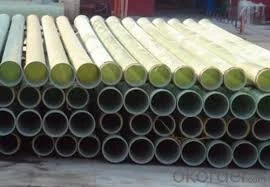
-
 Afrikaans
Afrikaans -
 Albanian
Albanian -
 Amharic
Amharic -
 Arabic
Arabic -
 Armenian
Armenian -
 Azerbaijani
Azerbaijani -
 Basque
Basque -
 Belarusian
Belarusian -
 Bengali
Bengali -
 Bosnian
Bosnian -
 Bulgarian
Bulgarian -
 Catalan
Catalan -
 Cebuano
Cebuano -
 China
China -
 China (Taiwan)
China (Taiwan) -
 Corsican
Corsican -
 Croatian
Croatian -
 Czech
Czech -
 Danish
Danish -
 Dutch
Dutch -
 English
English -
 Esperanto
Esperanto -
 Estonian
Estonian -
 Finnish
Finnish -
 French
French -
 Frisian
Frisian -
 Galician
Galician -
 Georgian
Georgian -
 German
German -
 Greek
Greek -
 Gujarati
Gujarati -
 Haitian Creole
Haitian Creole -
 hausa
hausa -
 hawaiian
hawaiian -
 Hebrew
Hebrew -
 Hindi
Hindi -
 Miao
Miao -
 Hungarian
Hungarian -
 Icelandic
Icelandic -
 igbo
igbo -
 Indonesian
Indonesian -
 irish
irish -
 Italian
Italian -
 Japanese
Japanese -
 Javanese
Javanese -
 Kannada
Kannada -
 kazakh
kazakh -
 Khmer
Khmer -
 Rwandese
Rwandese -
 Korean
Korean -
 Kurdish
Kurdish -
 Kyrgyz
Kyrgyz -
 Lao
Lao -
 Latin
Latin -
 Latvian
Latvian -
 Lithuanian
Lithuanian -
 Luxembourgish
Luxembourgish -
 Macedonian
Macedonian -
 Malgashi
Malgashi -
 Malay
Malay -
 Malayalam
Malayalam -
 Maltese
Maltese -
 Maori
Maori -
 Marathi
Marathi -
 Mongolian
Mongolian -
 Myanmar
Myanmar -
 Nepali
Nepali -
 Norwegian
Norwegian -
 Norwegian
Norwegian -
 Occitan
Occitan -
 Pashto
Pashto -
 Persian
Persian -
 Polish
Polish -
 Portuguese
Portuguese -
 Punjabi
Punjabi -
 Romanian
Romanian -
 Russian
Russian -
 Samoan
Samoan -
 Scottish Gaelic
Scottish Gaelic -
 Serbian
Serbian -
 Sesotho
Sesotho -
 Shona
Shona -
 Sindhi
Sindhi -
 Sinhala
Sinhala -
 Slovak
Slovak -
 Slovenian
Slovenian -
 Somali
Somali -
 Spanish
Spanish -
 Sundanese
Sundanese -
 Swahili
Swahili -
 Swedish
Swedish -
 Tagalog
Tagalog -
 Tajik
Tajik -
 Tamil
Tamil -
 Tatar
Tatar -
 Telugu
Telugu -
 Thai
Thai -
 Turkish
Turkish -
 Turkmen
Turkmen -
 Ukrainian
Ukrainian -
 Urdu
Urdu -
 Uighur
Uighur -
 Uzbek
Uzbek -
 Vietnamese
Vietnamese -
 Welsh
Welsh -
 Bantu
Bantu -
 Yiddish
Yiddish -
 Yoruba
Yoruba -
 Zulu
Zulu
frp cover
Understanding FRP Cover Key Concepts and Applications
Fiber Reinforced Polymer (FRP) composite materials have gained significant attention in various engineering fields due to their exceptional properties. One of the critical applications of these materials is in the realm of construction, specifically as a cover or protective layer for concrete structures. This article explores the importance of FRP cover, its characteristics, advantages, and potential applications.
FRP composites are composed of a polymer matrix reinforced with fibers, typically made from materials such as glass, carbon, or aramid. These composites offer high strength-to-weight ratios, excellent corrosion resistance, and superior durability compared to traditional materials like steel. As a result, FRP covers are increasingly being utilized for structural reinforcement and protective coatings in various infrastructures, including bridges, tunnels, and buildings.
Understanding FRP Cover Key Concepts and Applications
Moreover, FRP covers are lightweight, which is particularly beneficial in construction applications where reducing the dead load of a structure is crucial. Traditional protective systems can add substantial weight, leading to increased costs and more complex engineering solutions. However, FRP materials offer the strength needed without the additional mass. This characteristic is especially advantageous in retrofitting existing structures that may not have been designed to support the additional weight of conventional coverings.
frp cover

In addition to their protective capabilities, FRP covers provide aesthetic advantages. With a variety of colors and finishes available, architects and designers can incorporate FRP materials into their projects without compromising on visual appeal. The versatility of FRP materials allows for creative designs and solutions that enhance both functionality and aesthetics.
Another aspect worth mentioning is the ease of installation of FRP covers. Compared to traditional materials, the application and curing process of FRP can be executed more quickly, allowing for reduced downtime in construction projects. This efficiency is crucial in urban environments where minimizing disruption is a primary concern.
As the demand for sustainable building practices continues to grow, FRP covers also align with these green initiatives. The application of FRP materials can lead to significant resource savings over time by extending the lifespan of structures and reducing the need for frequent repairs and replacements. Consequently, they contribute to lower material consumption and reduced waste, which is beneficial for the environment.
In conclusion, FRP covers present a robust solution for the challenges faced in modern construction and maintenance of concrete structures. Their unique properties, such as high strength, lightweight nature, corrosion resistance, and aesthetic versatility, make them a preferred choice among engineers and architects. As the construction industry continues to evolve, the adoption of advanced materials like FRP is likely to increase, paving the way for more durable, efficient, and sustainable building practices. Ultimately, the integration of FRP covers not only enhances the performance of structures but also ensures their longevity and resilience against the test of time.
Latest news
-
Exploring the Benefits of Top Hammer Drifter Rods for Enhanced Drilling PerformanceNewsJun.10,2025
-
High-Precision Fiberglass Winding Machine for GRP/FRP Pipe Production – Reliable & Efficient SolutionsNewsJun.10,2025
-
FRP Pipes & Fittings for Shipbuilding - Corrosion-Resistant & LightweightNewsJun.09,2025
-
Premium FRP Flooring Solutions Durable & Slip-ResistantNewsJun.09,2025
-
Premium Fiberglass Rectangular Tanks Durable & Lightweight SolutionNewsJun.09,2025
-
Tapered Drill String Design Guide Durable Performance & UsesNewsJun.09,2025









